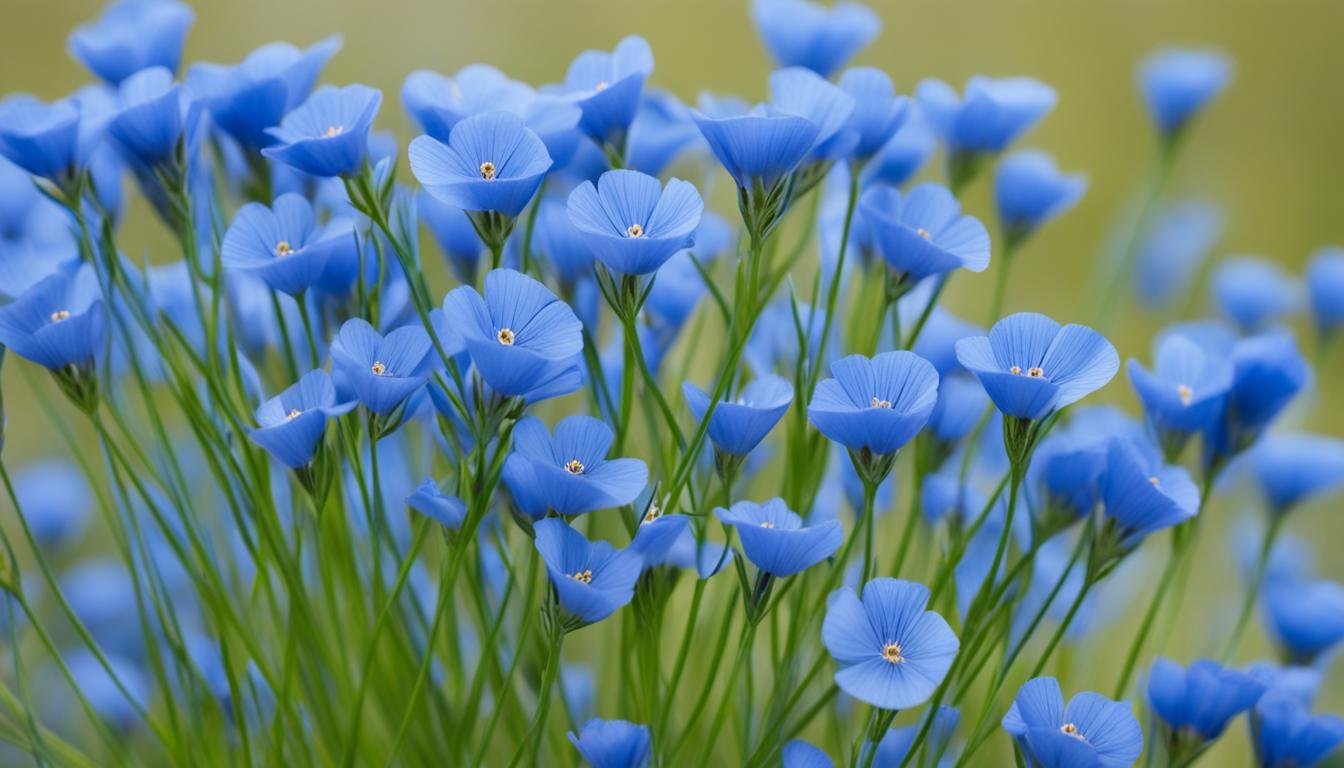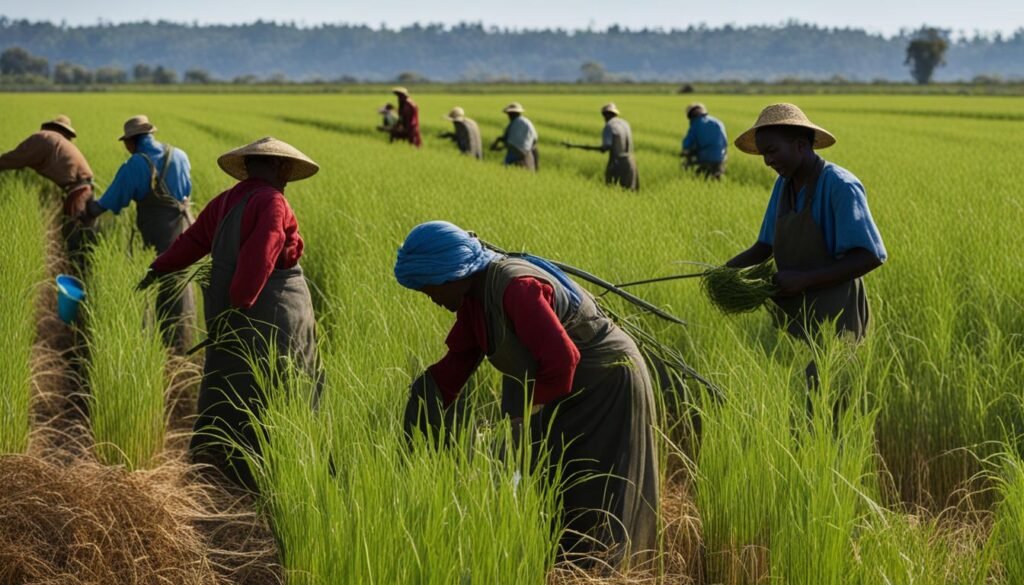Your cart is currently empty!

Linen as an Eco-Friendly Fabric: Sustainable Choice
In the world of eco-friendly fabric, linen stands as a crucial frontrunner. Historically revered for its durability and fineness, linen has evolved into an emblem of sustainable fashion. Its unique properties of resilience against high temperatures and moisture without promoting bacterial growth make it an excellent choice for environmentally friendly clothing.
Despite a few environmental and ethical challenges, the minimal impact and long-life cycle position linen as a highly sustainable choice, demonstrating its potential as a formidable biodegradable textile.
Key Takeaways
- Linen is an ancient, luxurious fabric known for its durability and fineness.
- The versatile properties of linen make it suitable for a variety of applications in the fashion industry.
- Pure linen fabric can consume as little as 6.4 liters of water over the course of its life cycle, far less than many other commonly used fabrics.
- Despite facing challenges such as potentially harmful dye processes and labor exploitation, linen remains a standout choice for sustainability.
- Efforts toward organic certification and ethical labor practices are crucial for maintaining linen’s status as an eco-friendly fabric.
- The long-life cycle and minimal environmental impact of linen underscore its role as a leading sustainable material in the textile industry.
The Origins and Properties of Linen
Linen history is marked by its long-standing significance in various cultures and practical applications. With its qualities and production process falling well within the parameters of sustainability, linen provides a noteworthy alternative in an increasingly environment-conscious world.
Linen’s Historical Significance
Linen reaches far back into human civilization, with artifacts like woven flax strands pointing to an existence of over 36,000 years. It played a pivotal role in ancient Egyptian society, enlisted as currency, burial shrouds, and even in the creation of a form of battle armor known as Linothorax. From upholstery to bread-making to the canvas for oil paintings, linen has served a multitude of purposes over the centuries.
From Flax to Fabric: The Making of Linen
A labor-intensive process underlies the production of linen, giving the garb its premium significance. Flax cultivation is the substratum of this process with the annual plant thriving in the cool, damp climate of regions like Western Europe and China.
The journey of flax to linen fibers incorporates nine distinct steps; from sowing seeds to retting (natural decomposition of pectin in flax stalks) to scutching (removal of stalk residues from fibers) to heckling (combing), and finally, the creation of yarn, the genesis of linen fabric. Every step of linen fiber production is meticulous, explaining the higher price point attached to linen goods.
Biodegradability and Durability: Linen’s Standout Features
Untouched by the march of time, linen eludes degradation when cared for, reinforcing textile longevity for up to 30 years. This enduring strength reduces the frequency of textile replacement, leading to lesser waste. Simultaneously, untreated linen is known for its biodegradable quality. Contributing to the cyclical nature of the environment, linen silently disintegrates into the Earth, leaving no harmful trace behind.
Thus, the combination of history, methodical production, long-term appeal, and pro-environment characteristics strengthens linen’s position in the textile world.
Linen as an Eco-Friendly Fabric

Bearing a legacy of sustainability, linen solidifies its position as an environmentally conscious choice in the sustainable textile industry. Harvested from the resilient flax plant, the creation of linen leaves a minimal environmental footprint. The plants have the ability to thrive in poor soil conditions with limited water requirements and high resistance to pests.
Traditional non-chemical retting methods such as dew retting present themselves as a more eco-friendly alternative to chemically-intensive processes.
Organic linen carries an ‘A’ grade for sustainability. Over the years, linen has evolved from being a simple luxury to a practical, everyday material. Despite significant progress, the industry grapples with the challenge to increase the market dominance of organic linen from its current minority status. This transition denotes not just production scalability, but also underscores the necessity for ethical fabric choices including transparent cultivation practices and improved labor conditions.
“Linen, for its planet-friendly attributes, will still need to grapple with the nuances in its production process to fully cement its status as a genuinely eco-friendly fabric.”
| Factors | Impact on Environment |
|---|---|
| Adaptable Growth Conditions | Low water footprint, minimal pesticide usage |
| Organic Cultivation | Chemical free, sustainable farming |
| Non-chemical Retting Methods | Reduction in harmful chemical runoff |
| Ethical Labor Conditions | Ensuring fair work practices |
As we venture forward in this era of environmental consciousness, the adoption of fabrics like linen provide a blueprint for a sustainable future. Embarking on this paradigm shift isn’t without its complexities. However, the burgeoning demand for ethical and sustainable choices in the textile industry serves as a catalyst for positive change.
Environmental Benefits of Choosing Linen
The enviable environmental advantage aligned with linen begins with the hardy flax plant, which thrives with minimal water in various climates, typically utilizing only the nourishing gift of rainwater. This attribute offers an appealing contrast to the resource-draining water footprint associated with traditional alternatives, such as cotton.
Water Conservation and Low Pesticide Use in Flax Farming
Embracing the virtues of sustainable agriculture, flax cultivation showcases an admirable reliance on low pesticides and herbicides. This eco-friendly approach resonates deeply in our increasingly conscious world, where every choice for sustainability matters. Flax imparts an additional gift post-harvest, as every part of the plant finds purpose, underlining the ethos of waste management and full-circle lifecycle.
Carbon Sequestration and Eco-Friendly Flax Cultivation Practices
The cultivation practices in flax farming are grounded in the ambition to reduce our carbon footprint. The flax plant plays a noteworthy role in carbon sequestration, acting as a natural defense in the urgent battle against climate change. The inherent recycling ethos in flax cultivation supports eco-system preservation well beyond the fabric’s creation, evidencing the cyclical beauty of nature.
Linen’s Contribution to Reducing Landfill Waste
Applauded for its generous lifespan and biodegradability, linen fits seamlessly into the concepts of the circular economy, rejoining the earth as a harmless contribution when its cloth role is served. Its minimal impact on landfill waste becomes a feather in its environmental cap, illustrating yet another reason why linen is a wise, earth-conscious choice in our quest for sustainable lifestyles.
FAQ
What makes linen an eco-friendly fabric?
Linen is an environmentally friendly fabric due to its low water consumption, minimal pesticide usage, and the complete utilizability of the flax plant from which it is derived. Linen not only aligns with the principles of a circular economy due to its biodegradability but also contributes to carbon sequestration and ecosystem preservation. It is a sustainable choice as a textile in comparison with cotton and other fabrics due to its water conservation, lower chemical usage, and organic cultivation practices.
What is the historical significance of linen?
Linen has a deep-seated historical value, with roots dating back at least 36,000 years. Functions of linen have ranged from serving as a currency in Egypt, a material for mummification, battle armor, and even a canvas for oil paintings. Its labor-intensive production process and enduring quality have associated linen with wealth and luxury throughout history.
How is linen made?
Linen is made from the flax plant, and its production involves a meticulous, labor-intensive process of nine distinct steps. These include planting, growing, harvesting, retting, scutching, hackling, spinning, weaving, and finishing. Despite its lengthy and complex production, linen’s durability, texture, and eco-friendly properties make it a standout fabric.
What are the standout features of linen?
Linen is recognized for its biodegradability, durability, resilience against high temperatures, and improving texture with repeated washing. Furthermore, untreated linen is moth-resistant, which means it does not contribute significantly to textile waste and aligns with the principles of sustainable living.
How does linen contribute to environmental sustainability?
Linen contributes to environmental sustainability in multiple ways. It uses far less water than cotton, relies minimally on pesticides and herbicides, and the entire flax plant is usable, minimizing waste. It also contributes to carbon sequestration and is kinder to the ecosystem. Linen, being biodegradable, reduces the impact on landfills, reintegrating into the earth harmlessly after its lifecycle.
How does linen farming contribute to water conservation?
The flax plant from which linen is derived needs very little water to grow, thriving in various climates primarily reliant on rainwater. This results in a low water footprint for linen, making it a key player in sustainable fabric production and water conservation, especially in comparison with water-intensive cotton farming.
What are the environmental benefits of flax cultivation practices?
Flax cultivation practices contribute to the environment positively by enabling carbon sequestration and preserving ecosystems. Minimal use of pesticides and herbicides in flax farming plays a vital role in safeguarding the environment and agricultural communities. Furthermore, every part of the flax plant finds a purpose after harvest, thereby ensuring no wastage and aligning with sustainable agricultural practices.
How does linen contribute to reducing landfill waste?
Being remarkably durable, linen lasts longer than many other textiles. This reduces textile waste as linen products do not need frequent replacement. Additionally, linen is biodegradable, which means it reintegrates into the earth harmlessly instead of ending up as long-lasting waste in landfills after its lifecycle.
Leave a Reply